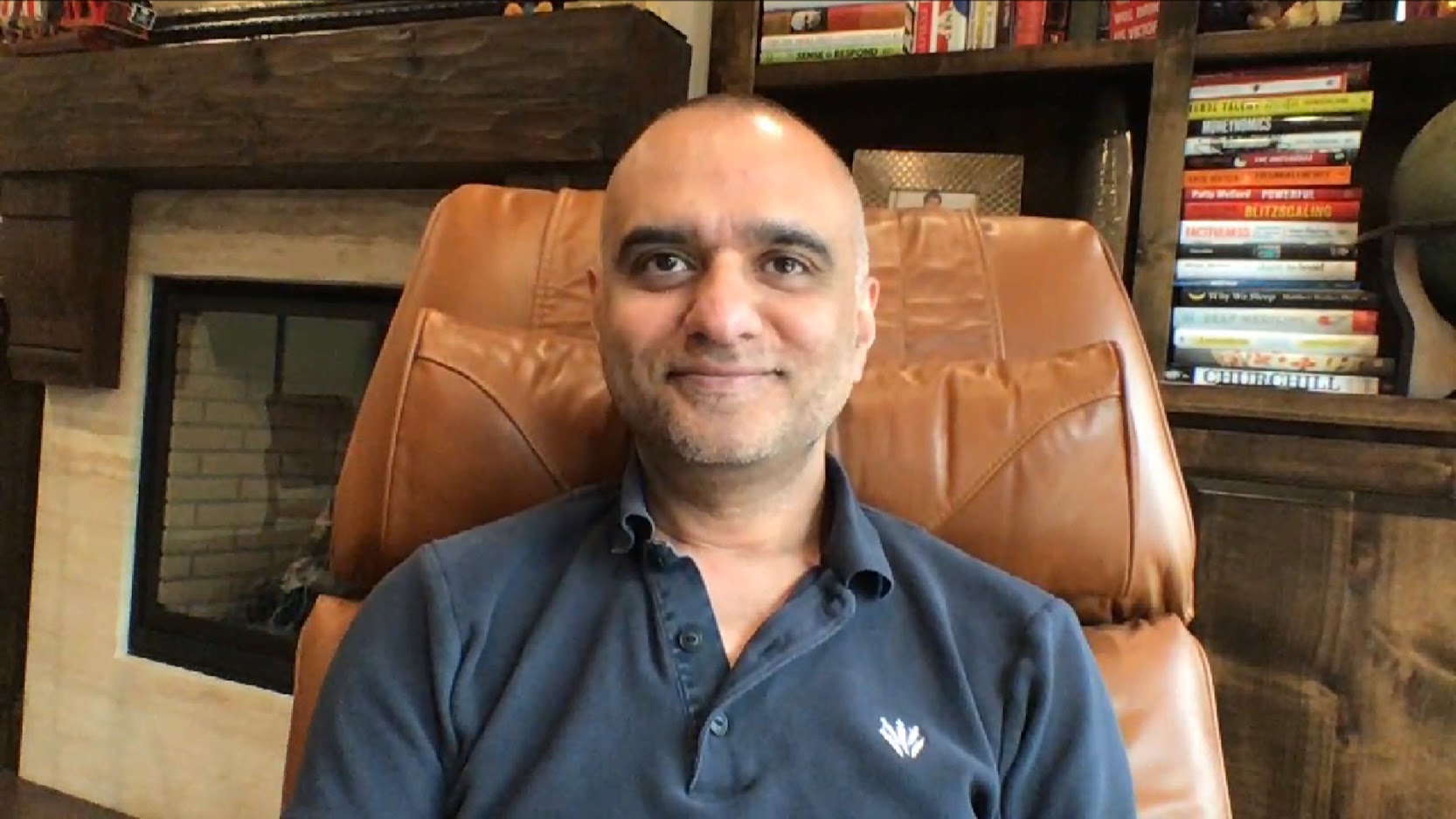 CLOUD
CLOUD
 CLOUD
CLOUD
 CLOUD
CLOUD
He came to the United States with only $900 in his pocket and is now retired from the company he built into a $1.6 billion hyperconverged infrastructure software juggernaut.
Dheeraj Pandey (pictured) stepped down from his role as co-founder and chief executive officer of Nutanix Inc. last year after an 11-year run building the company to become a key player in the integration of compute, storage and networking. His departure comes at a time when the computer industry is transitioning through yet another shrink cycle.
Whether it was the transition from mainframes to Unix servers in the 1990s, migration to Windows and Intel in the 2000s, or the virtualization movement over the past decade, technology has a history of ultimately getting smaller, literally. In Pandey’s assessment, the mushrooming growth of cloud and its expanding footprint now offer a similar opportunity.
“With cloud in the last three to four years, and what will happen in this coming decade, we’re going to make it even smaller,” Pandey said. “We’re creating a proliferation of clouds, there’s a sprawl, a massive sprawl of cost centers, so we need yet another layer of software for governance to rein in that chaos. Hence the need for a new HCI, a ‘hybrid cloud infrastructure.’”
Pandey spoke with Stu Miniman, host of theCUBE, SiliconANGLE Media’s livestreaming studio, during theCUBE on Cloud event. They discussed the evolving role of large public cloud providers, the continued challenge of meeting customer needs, impact of the pandemic on digital transformation, diversity in the tech world and his decision to step away.
In an ironic twist to the history of innovation, as the technology has gotten smaller, companies providing the key platforms have gotten bigger. The three largest public cloud platforms — Amazon.com, Microsoft and Google — are also now three of the largest companies in the world.
“If you go back to the 1990s, IBM was big, Microsoft was big, AT&T was big, there’s always been big companies,” Pandey noted. “The way that Amazon has organized itself is really unique and creative, with general managers and very independent, highly autonomous groups. For others, decision-making and staying competitive and staying scrappy will come a lot harder.”
Staying competitive will likely require an acceptance that the hybrid cloud will be the platform of choice among enterprise customers for the foreseeable future. Just this month, the Nutanix Enterprise Cloud Index for Financial Services documented that 86% of polled information technology decision makers viewed hybrid cloud as their preferred model.
Findings such as these will undoubtedly continue to influence the direction of the major public cloud providers.
“They’ve come to realize that, in the last two years, they cannot force all of enterprise computing to come to a hyperscaler’s data center,” Pandey said. “We’ll try to walk with the customer to where we want them to be, whether it’s a hyperscaler data center or the notion of hybrid cloud infrastructure, but many a time we’ve got to walk over to where they are.”
At the beginning of 2021, enterprise customers are continuing to deal with economic uncertainty and disruption caused by a global pandemic. Efforts to combat COVID-19 have galvanized healthcare organizations, previously slow in embracing digital transformation, to adopt tech solutions out of necessity.
“Now, all of a sudden, we’re talking about telehealth because of the pandemic,” Pandey said. “What we’ve seen in the pandemic is just the beginning of what digital will be going forward. Speed is going to be the name of the game when it comes to survival and thriving in this new age. It’s these kind of black swan moments that really change the world.”
Since his departure from Nutanix, Pandey has been reflecting on the direction of the tech industry, not purely from a technical standpoint, but from the cultural side as well. This includes the role that developers can play in broadening diversity within the tech industry itself.
“I’ve been passionate about developers in the last 10 years,” Pandey said. “Diversity and inclusion are unresolved problems in the developer community. There’s an amazing opportunity for the industry to elevate to where the woman developer can speak up in this world that’s full of so many men, the black developer can speak up.”
Pandey’s former company remains locked in a highly competitive race with VMware Inc. for domination of the HCI market. The latest estimates released in December by IDC showed VMware with 40% of the software revenue, followed by Nutanix with 25% and Cisco Systems Inc. a distant third at 6%.
Nutanix has weathered a significant transition to a subscription model and persistent takeover speculation. For the company’s co-founder, it seemed like a good time to step away.
“I have aged probably 10 years in these last three years,” Pandey said. “This idea of becoming a subscription company, changing the core of the business in the on-prem world itself, it’s akin to changing the wings of a plane at 40,000 feet where none of the passengers blink. I figured it was a good time to figure out a way to let go of this and think of what’s bigger and better for Nutanix.”
Here’s the complete video interview, part of SiliconANGLE’s and theCUBE’s coverage of theCUBE on Cloud event:
Support our mission to keep content open and free by engaging with theCUBE community. Join theCUBE’s Alumni Trust Network, where technology leaders connect, share intelligence and create opportunities.
Founded by tech visionaries John Furrier and Dave Vellante, SiliconANGLE Media has built a dynamic ecosystem of industry-leading digital media brands that reach 15+ million elite tech professionals. Our new proprietary theCUBE AI Video Cloud is breaking ground in audience interaction, leveraging theCUBEai.com neural network to help technology companies make data-driven decisions and stay at the forefront of industry conversations.